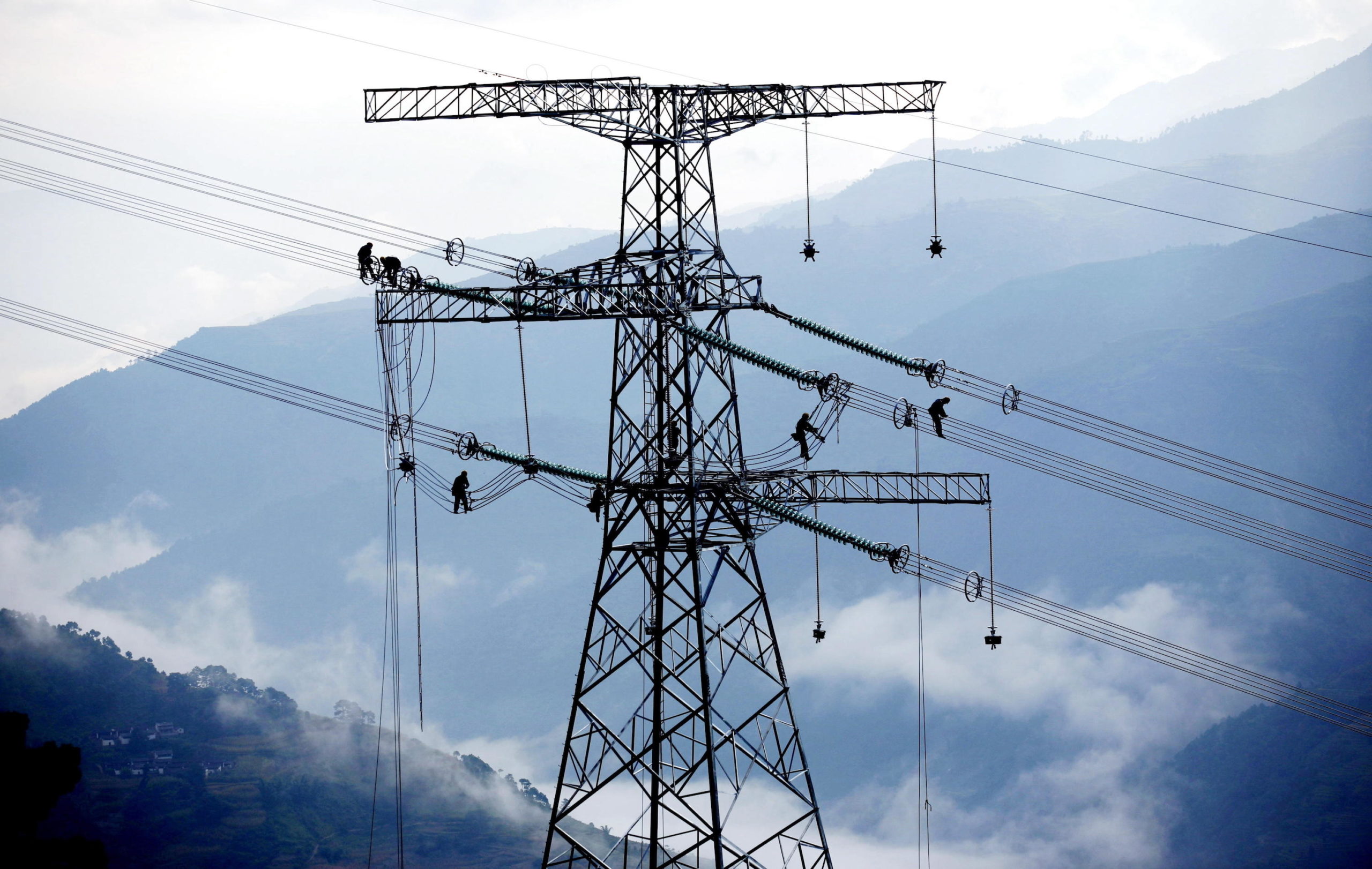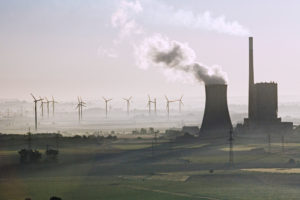Towards the end of 2020, China surprised the world by announcing a set of long- and mid-term climate targets: in September came the 2060 carbon-neutrality pledge, and then in December a set of updated 2030 climate targets. A key target among these is to increase the share of non-fossil fuel in the country’s energy mix to around 25% by 2030, from 15.3% in 2019.
Even though China has not clarified if it intends to keep its 1,100 GW cap on coal power capacity, set in the 13th Five Year Plan (for 2016-2020), the long-term trend of decarbonisation is in motion. The country’s energy experts have more or less reached the consensus that a fundamental transformation of the coal sector is inevitable.
Currently, coal comprises 57% of China’s primary energy consumption. Yang Fuqiang, senior advisor to advocacy group the Natural Resources Defense Council, suggests that the share of coal should be lowered to less than 50% in the 14th Five Year Plan period (2021-2025). A new report by the Draworld Environment Research Center and the Centre for Research on Energy and Clean Air (CREA) also pointed out that adding any new coal capacity after 2020 would run against China’s new climate pledges. Indeed, to fulfil its 2030 commitments, over the next ten years, China will need to shrink its coal power capacity from the current near 1,100 GW to about 680 GW. “Quitting coal is something China must do,” says Zhang Shuwei, the report’s lead author.
A fundamental transformation of the coal sector is inevitable.
With the ultimate goal set, China faces the “growing pains” of a power sector rapidly adding renewables and shedding coal power. These include the socio-economic shocks of shutting down coal power plants, the effect on the reliability of the power system and the impact on future power demands. One key issue that emerged in recent discussions concerning the transition from coal is how to reform pricing mechanisms to adjust the fuel’s role in the power system and smooth its phase-out.
A difficult transition
In a power system that’s quickly decarbonising, one big role change for coal is the shift from a “base-load” power supplier to a more supportive role.
As the share of renewables gradually increases, the utilisation of existing coal power plants for electricity generation continues to drop. Yet the intermittency of solar and wind power means coal needs to pick up the role of “load regulation” in the system.
A 2019 Beijing News report highlighted this new reality for coal. In 2018, China’s coal power plants were utilised for 4,361 hours on average, far lower than the 5,300-5,500 hours projected by the industry that year. Many of the units stayed idle for a good part of the year, and almost half of China’s coal fleet reported a loss.
But shifting to a new role is easier said than done. When some power plants are called upon to participate in peak-load regulation, the required extra responsiveness increases coal consumption considerably. And, if managed improperly, it also increases wear and tear of generation units. Retrofits to increase flexibility are expensive, and many companies lack the incentive to invest in them.
Nevertheless, in some provinces, coal has already become a back-up source of power. Professor Yuan Jiahai of the North China Electric Power University told China Dialogue that in provinces such as Sichuan, Yunnan and Guangxi, where hydropower dominates, coal is often only utilised during the dry season or in response to peak load. Annual utilisation for each coal plant has hovered around 2,000 hours for a long time. Nevertheless, local authorities are not keen on letting the plants go, as they want a certain amount of coal power to keep the system reliable. Moreover, local governments are unwilling to face the prospect of laying off a large number of workers employed by those power plants.
Reforming pricing mechanisms
Yuan believes that to address the issues raised by China’s transitioning power sector, current incentives anchored to the utilisation hours of coal power plants need to change.
The power market’s existing pricing mechanisms are still heavily generation-oriented. Power plants receive revenues mostly through generating electricity and selling it to the grid. Other contributions to the system, be it load balancing or offering back up, do not create appropriate value for the power plant in the market.
This situation makes it difficult for coal plants to withdraw from the generation market to make space for renewable power, as less generation means less income. It also hinders retrofitting and transition. As Zhang Xilin, a researcher with CHN Energy, points out, most regions offer little or no price incentives for coal power to do peak-load regulation, making flexibility retrofits extremely uneconomic.
Decoupling generation and revenue is a key area of China’s recent power market reforms. In October 2019, the National Development and Reform Commission, the country’s top economic planner and power market regulator, issued a guidance document on improving pricing mechanisms for power system services such as load balancing and frequency regulation. The contribution made by coal-fired power plants in providing these system-stabilising services should be valued properly through the market, the guidance document says. It also specifies that for provinces where coal power is chronically under-utilised, “capacity compensation mechanisms” – wherein power plants are remunerated based on installed capacity rather than generation – should be developed.
Before this central government policy directive, regions in China had already been exploring ways to price the changed role of coal power. Hebei and Shandong provinces, for example, have been experimenting with the so-called “two-part pricing mechanism” wherein power plants that provide household heating in the winter are compensated for power generation during that season, and for their installed capacity for the rest of the year when they stay idle. There is other research ongoing into how a spot market can better capture the value of coal-fired power plants offering frequency regulation.
In hydro-dominated Yunnan, a compensational mechanism for the long-term standing by of coal – which makes up just 20% of the province’s power generation fleet – has been piloted since 2015. Under this mechanism, hydropower stations in Yunnan deposit one Chinese cent into a “stand-by fund” for every kilowatt hour of electricity they generate to finance the role of coal-fired power plants as back-up power supply. The mechanism is not without controversy, though, for its blatant subsidising of one power source at the expense of another.
A capacity market?
From Yuan Jiahai’s perspective, in the short term, the more sensible choice for China’s power market is capacity payments to ensure “strategic back up”. Such payments are made regardless of whether the power produced by the plant is dispatched. Under this mechanism, the government essentially incentivises some coal-fired power out of the generation market and orders it to stay in stand-by mode ready to be called upon if needed. This is by nature an arbitrary administrative action, preventing these coal-based power sources from competing fairly with other energy sources in the market. But Yuan says that as China is facing a surplus of power supply, with a large fleet of old coal-fired power generation units, setting up a strategic back-up mechanism could allow those units, not yet at the point of retirement, to continue contributing to the power system while also providing a pathway for their withdrawal.
“The capacity market should not become a protection for backward power plants.”Prof. Yuan Jiahai, North China Electric Power University
Yuan emphasises that a capacity market should not become a compensational mechanism to pay for the loss of redundant and inefficient coal-fired power plants. In the long run, it should be a fair and efficient market for incentivising capacity investments that ensures the reasonable abundance of power supplies. Different power sources should be allowed to compete for meeting the back-up power capacity needs beyond maximal projected demand (due to load projection errors, unexpected outages and the intermittency of renewables), Yuan suggests. For a complex and large power market like China’s, such a capacity market would produce the most efficient winners for providing that capacity.
Professor Xia Qing from Tsinghua University’s Department of Electrical Engineering agreed at a recent roundtable discussion that in the short term, coal power’s role as a supporting power source is not disputable. But he also emphasised that no new coal capacity should be added in the 14th Five Year Plan period. Rather, China should better utilise its existing coal power fleet and “wake up its potential”. “Many such units have huge potential to respond to power system needs,” he said.
“The capacity market should not become a protection for backward power plants,” Yuan Jiahai reiterates. “Its ultimate purpose is to reward low-cost generation units and accelerate the phase out of high-cost units.”









